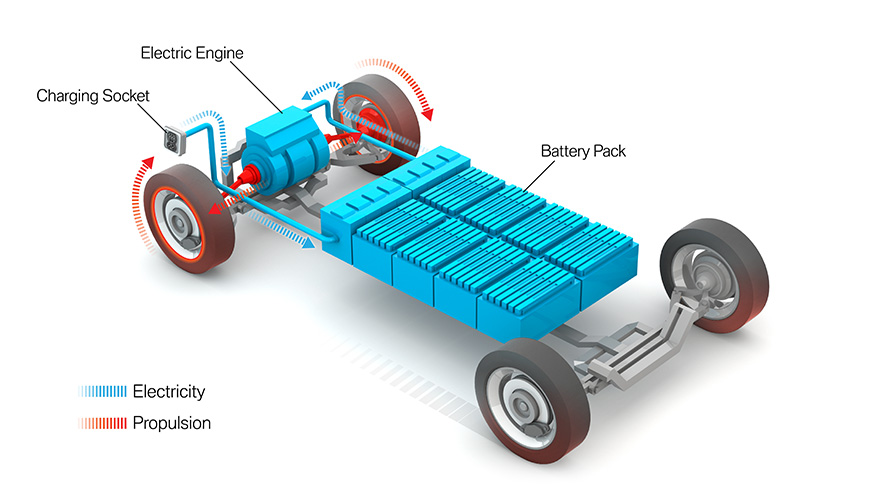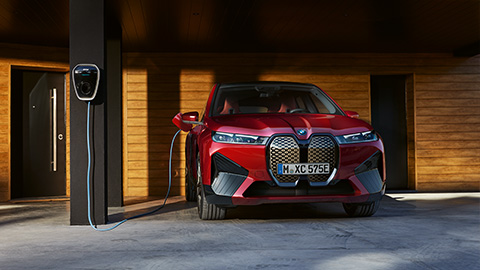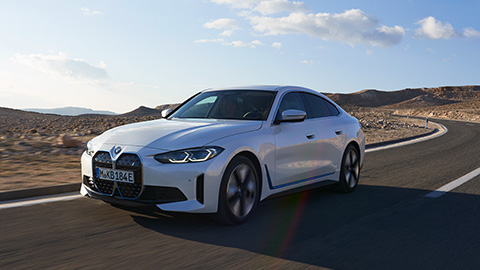Our tool for managing your permission to our use of cookies is temporarily offline. Therefore some functionality is missing.

THE BMW ELECTRIC CARS.
100% electric. 100% driving pleasure. 100% BMW.
Did you know that back at the Summer Olympic Games of 1972 held in Munich an all-electric BMW 1602e drove ahead of the athletes in the endurance events in order to film them and supply them with water as necessary? Emission-free and silent, it was the ideal companion at the time and did not obstruct the competitors in achieving their top performances. Today, almost five decades later, we have perfected this capability as well as our know-how in the field of electrified mobility through continuous development of the BMW eDrive technology and the BMW i sub-brand. With our all-electric models BMW iX, BMW iX3, BMW i3, BMW i3s and BMW i4, you experience an entirely new sensation of sheer driving pleasure. After all, nothing compares with the feeling of gliding almost silently through urban or rural traffic, the instant response of the electric engine and unique acceleration from stand-still. And all of this is free of exhaust fumes and local emissions. Join us to explore the world of BMW electric cars.
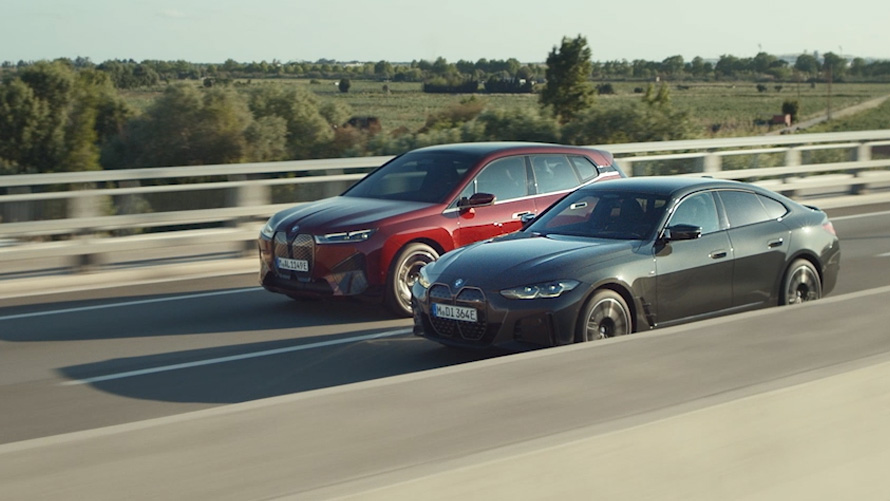
THE ULTIMATE ELECTRIC DRIVING MACHINE.
The first of their kind, the new all-electric BMW i4 and BMW iX offer a new level of quality for electrifying driving pleasure. With long ranges and networked charging solutions from BMW Charging, the new BMW i4 and BMW iX set new standards of daily driving practicality and long-distance comfort.
OUR ELECTRIC CARS: BORN ELECTRIC.
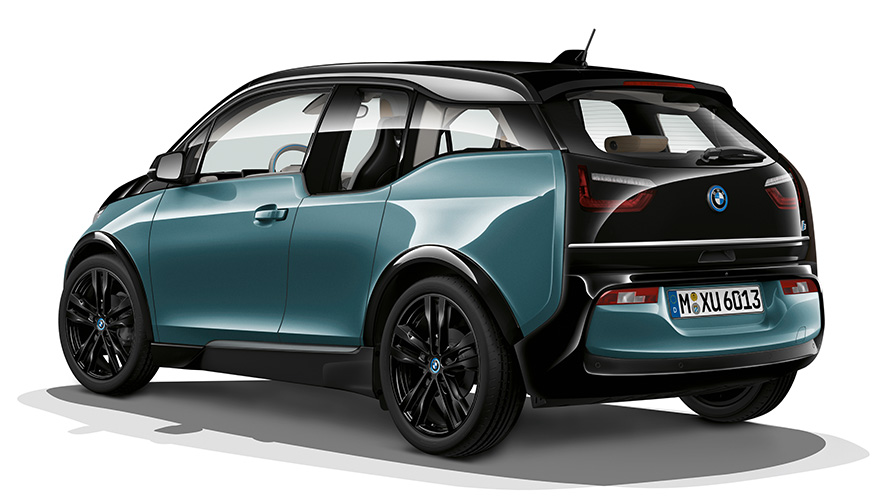

BMW i3.
The BMW i3 does not follow any trend, it is an expression of a self-confident lifestyle. Its progressive design language conveys clarity on the outside and lounge character on the inside. Equipped with a lightness that convinces with sustainable materials and functional details. A vehicle with which individuality becomes trend-setting.
BMW i3s.
If sporty and locally emission-free driving means the future, then the BMW i3s arrived there a long time ago. And it takes off right away. With an impressive acceleration, a typical one-pedal feeling and its progressive design, it unleashes its sporty dynamics. Emotions under electric current are experienced with every metre.
OUR ELECTRIC CARS: BORN ELECTRIC.


BMW i3.
The BMW i3 does not follow any trend, it is an expression of a self-confident lifestyle. Its progressive design language conveys clarity on the outside and lounge character on the inside. Equipped with a lightness that convinces with sustainable materials and functional details. A vehicle with which individuality becomes trend-setting.
BMW i3s.
If sporty and locally emission-free driving means the future, then the BMW i3s arrived there a long time ago. And it takes off right away. With an impressive acceleration, a typical one-pedal feeling and its progressive design, it unleashes its sporty dynamics. Emotions under electric current are experienced with every metre.
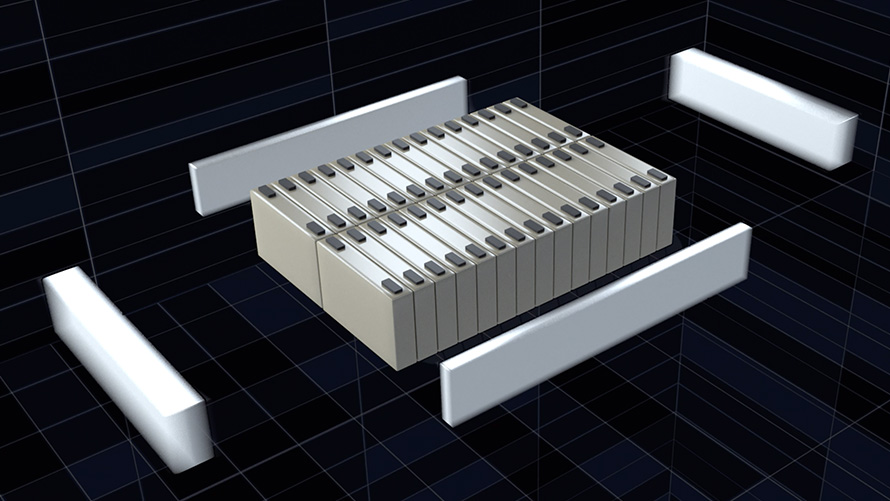
THE TECHNOLOGY BEHIND.
Discover the all-electric drive technology BMW eDrive.
FAQ: THE MOST IMPORTANT QUESTIONS AND ANSWERS ON OUR ELECTRIC CARS.
-
What is an electric car?
![BMW electric car FAQ BMW e-mobility BMW electric car FAQ]()
A purely electric car (BEV, Battery Electric Vehicle) drives exclusively with electricity. It therefore has no combustion engine to power the vehicle. The electricity is stored in a battery. Its capacity determines the range of the e-car, in other words the distance that can be covered with one battery charge.
Many drivers worry about the range – in most cases such worries are unfounded. After all, most BEVs today have a range of more than 250 kilometres. And, in any case, 90% of drivers in Germany for example travel less than 100 kilometres per day.
Purely electric cars are ideal for users who can charge electric cars at work or at home. At the same time, the extension of the public charging infrastructure is being pursued intensively. New charging stations are therefore appearing all the time in urban areas and along motorways. In the future, long-distance journeys will become easier and easier as a result.
-
What advantages does an electric car have?
An electric car offers an entirely new, emotionally charged driving sensation. Thanks to the torque available from a stand-still, you experience fascinating electric dynamics and spontaneous acceleration. At the same time, the almost silent electric engine gives you a new and relaxed driving experience.
When actually driving, a BEV is also emission-free (the term also used is “locally”) and thus offers maximum protection for our environment.
Additional benefits of BEVs are the highest category of country-specific subsidies and tax incentives that they entail.
-
What factors affect the performance of the high-voltage battery in my electric car?
One important external factor influencing the performance and capacity of a battery is the temperature. As you probably know from your mobile phone battery, the performance is restricted in cold and hot temperatures. In your vehicle, however, this temperature influence is largely minimised by means of optimised operating strategies. And did you know that the capacity of the storage system also yields information on the range you may have? Apart from temperature, other factors affecting the range are energy consumers, such as the air conditioning, the load carried and your driving style.
-
How does my driving style affect the range of my electric car?
As is the case for a vehicle with a conventional combustion system, driving style also affects the range of an electric car. As a general rule, an anticipatory, relaxed and consistent driving style optimises your range. If, for example, you reduce your speed on the motorway, you can noticeably increase your range as a result. During recuperation, that means whenever you lift your foot from the accelerator pedal, kinetic energy is converted into electrical energy and fed into the battery – and you gain further kilometres in range.
-
What do I have to consider if my electric car is left standing still or parked for a longer period of time?
If you leave your vehicle parked for a longer period, such as during your holiday, try and maintain a charge level between 30% and 50% and leave your vehicle in a cool or shady place during the summer and in a garage during the winter. In addition, the vehicle should not be left plugged in for charging when stationary for longer periods of time.
FUEL CONSUMPTION AND CO2 EMISSIONS.
BMW iX(1):
Power consumption in kWh/100 km (combined): under 21
Fuel consumption in l/100 km (combined): 0
CO2 emissions in g/km (combined): 0
BMW iX3:
Fuel consumption in l/100 km (combined): 0
CO2 emissions in g/km (combined): 0
Electric consumption in kWh/100 km (combined): 17.8–17.5
BMW i3:
Fuel consumption in l/100 km (combined): 0
CO2 emissions in g/km (combined): 0
Electric consumption in kWh/100 km (combined): 13.1
BMW i3s:
Fuel consumption in l/100 km (combined): 0
CO2 emissions in g/km (combined): 0
Electric consumption in kWh/100 km (combined): 14.6–14.0
The values of the vehicles labelled with (1) are preliminary.
The information on fuel consumption, CO2 emissions and energy consumption has been determined in accordance with the prescribed measurement procedure VO (EU) 715/2007 in the version applicable at the time of type approval. The figures refer to a vehicle with basic configuration in Germany and the range shown considers optional equipment and the different size of wheels and tires available on the selected model.
Further information about the official fuel consumption and the official specific CO2 emissions for new passenger automobiles can be found in the 'New Passenger Vehicle Fuel Consumption and CO2 Emission Guidelines', which are available free of charge at all sales outlets and from DAT Deutsche Automobil Treuhand GmbH, Hellmuth-Hirth-Str. 1, 73760 Ostfildern, Germany and on https://www.dat.de/co2
The values are already based on the new WLTP regulation and are translated back into NEDC-equivalent values in order to ensure the comparison between the vehicles. For vehicle related taxes or other duties based (at least inter alia) on CO2-emissions the CO2 values may differ to the values stated here.
Fuel consumption and CO2 emissions.
-
Disclaimer reference invalid
